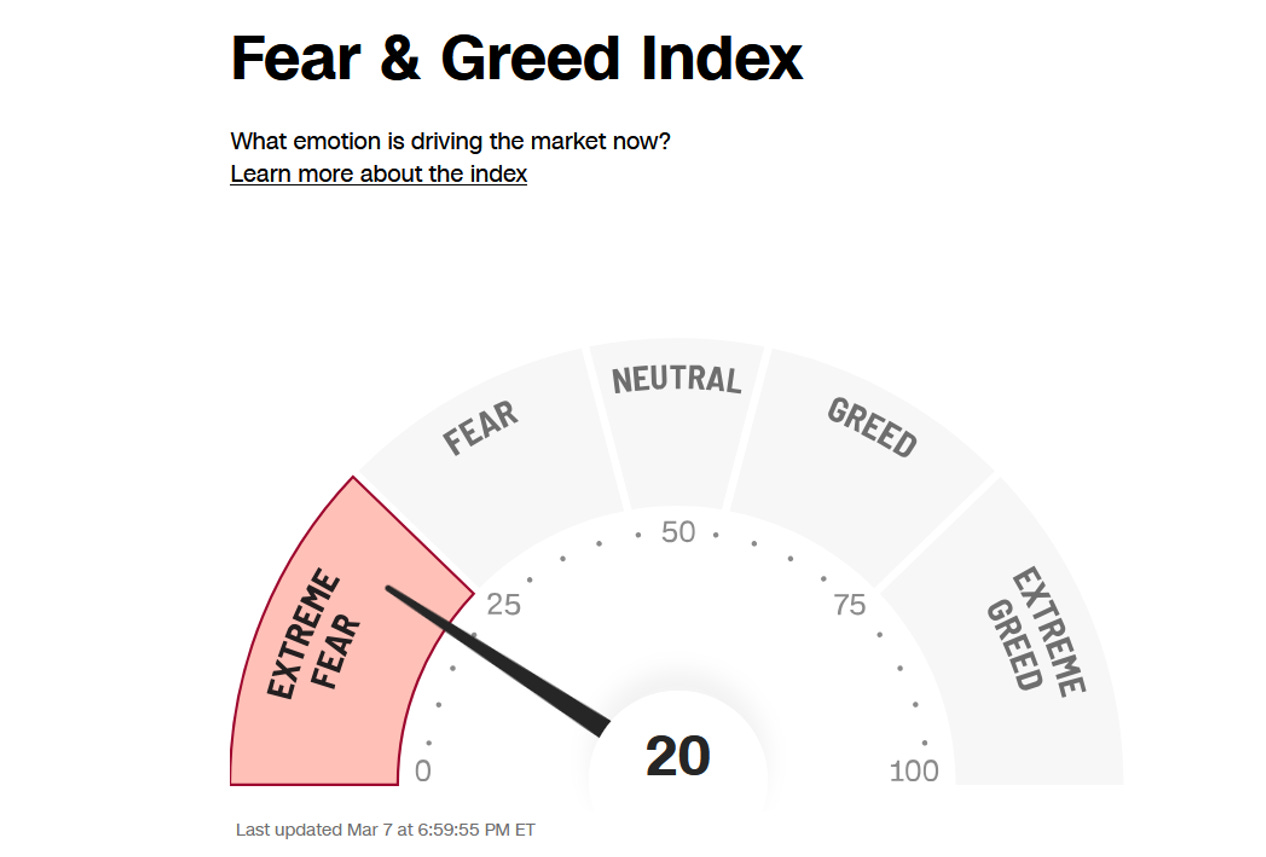Market Sentiment is Awful, But That’s Not a Smart Reason to Buy
Naive investors who rush to ‘buy the dip’ are blindly attempting to catch a falling knife.
Risk assets like the U.S. stock market and cryptocurrencies have been sinking in recent weeks for a variety of reasons, including the deflation of speculative bubbles, the increasing risk of an imminent recession, and mounting frustration with President Donald Trump’s economic policies—particularly his inconsistent stance on tariffs, which threatens to ignite a trade war.
Following a 7% decline in the S&P 500 and a 10% drop in the Nasdaq 100, investor sentiment has plunged to one of its lowest levels in years. Many optimists argue that this extreme pessimism signals a market bottom and presents a prime opportunity to "buy the dip" before the next rally. However, as I will demonstrate in this piece, that mindset is both flawed and risky.
First, I want to highlight where the major U.S. stock indices currently stand and share my thoughts on them, starting with the bellwether S&P 500. Recently, the index closed below the critical 5,800–6,000 support zone I’ve been showing, signaling a concerning technical breakdown. If the S&P 500 remains below this level, it is likely to face even further losses in the near future.
The tech-heavy Nasdaq 100 also closed below its key support zone of 20,750–21,000, a bearish signal that indicates the potential for further declines ahead:
The Dow Jones Industrial Average (DJIA) has yet to experience a technical breakdown, but I’m closely watching the key support zone between 41,600 and 42,000. A decisive close below this level will trigger an acceleration of the sell-off in both the Dow and the broader U.S. stock market. However, be mindful of the potential for a brief bounce at this major support before a deeper breakdown occurs.
During the recent market selloff, many users on X/Twitter have been highlighting various market sentiment indices, emphasizing how bearish and oversold they are. Many argue that these extreme readings signal an imminent market bottom and present a prime opportunity to buy stocks before the bull market resumes its climb to new highs. One of the most frequently cited indicators is CNN’s Fear & Greed Index, which has remained in the “extreme fear” zone in recent weeks.
Another widely circulated indicator is the American Association of Individual Investors (AAII) Sentiment Index, the most popular and longest-running U.S. stock market sentiment gauge, dating back to 1987. The latest reading places market sentiment among the worst 1% of all recorded levels, highlighting the extent of investor pessimism.
As I’ve been saying, many mainstream investors—despite the U.S. stock market being in a massive bubble (as I’ll soon explain)—remain steadfastly optimistic. They point to the extreme bearish sentiment readings as a reason to believe the worst of the sell-off is over and that brighter days lie ahead. However, I want to debunk this overly simplistic logic and caution against relying on sentiment alone as a buy signal.








